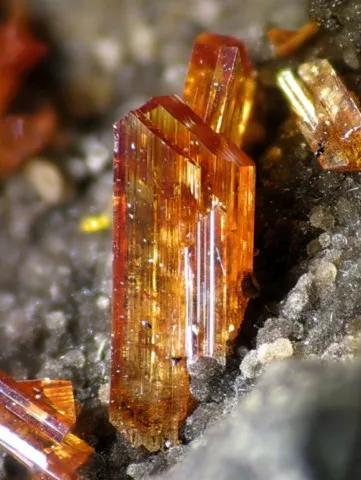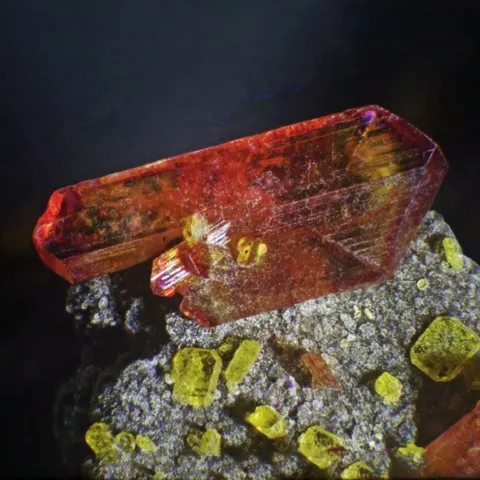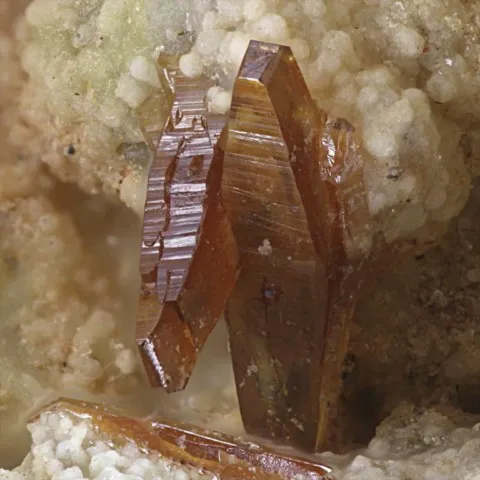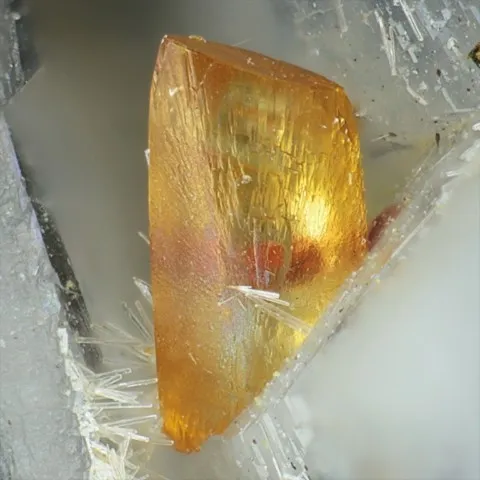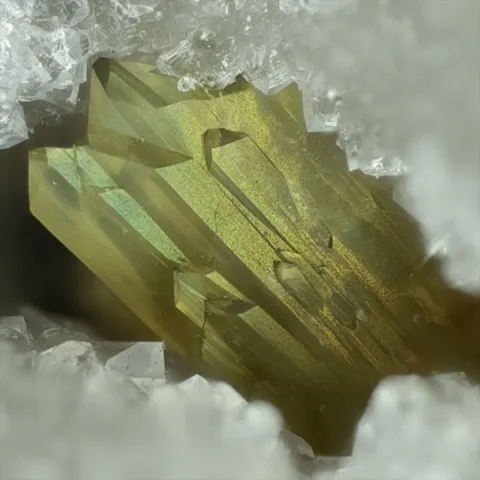RASPITE
Class : Sulfates, chromates, molybdates
Subclass : Tungstates
Crystal system : Hexagonal
Chemistry : PbWO4
Rarity : Very rare
Raspite is an extremely rare lead tungstate, dimorphic to stolzite. It is found in the oxidation zones of tungsten and tin deposits and is exceptionally present in gold placers. It was named in honor of the prospector Charles Rasp who discovered the Broken Hill deposit and the mineral. Raspite forms striped tabular to lamellar crystals, pale yellow to brownish-yellow, sometimes gray.
Main photo : Raspite from Broken Hill Proprietary Mine, Australia © Christian Rewitzer
Raspite in the World
Twinning
Twinning is common on {100} and also on {-102}.
Fakes and treatments
No fakes listed for this mineral species.
Hardness : 2.5 to 3
Density : 8.46
Fracture : Undetermined
Streak : Undetermined
TP : Transparent
RI : 2.270 to 2.300
Birefringence : 0.030
Optical character : Biaxial +
Pleochroism : None
Fluorescence : None
Solubility : Hydrochloric acid
Magnetism : NoneRadioactivity : None

